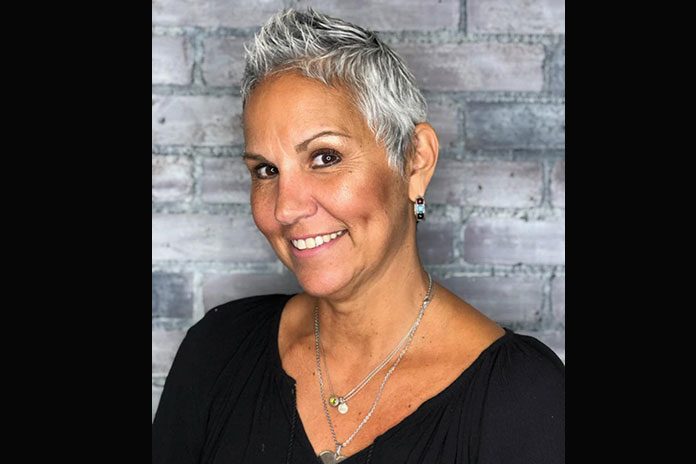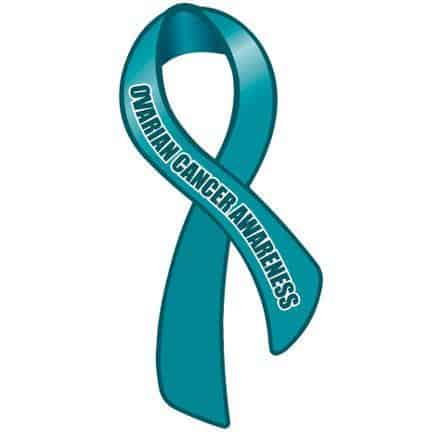
The NJ Lottery estimates that you have a one in about 300 million chance of claiming that Mega Millions jackpot. National Geographic estimates that you have a one in 700,000 chance of being struck by lightning in the US.
These high odds may seem wildly unlikely, yet we still buy lottery tickets and we still seek shelter from a harsh storm.
As a female, the odds of being diagnosed with ovarian cancer are a strikingly low one in 78. But does every woman take similar precautions to beat those odds? Does every woman get tested?
The Silent Killer
September is widely recognized as Ovarian Cancer Awareness Month in an effort to shed light on the “silent killer” that is ovarian cancer. According to the Centers for Disease Control and Prevention (CDC), ovarian cancer causes more deaths than any other cancer of the female reproductive system.
Ovarian cancer ranks in the top 10 cancers by rates of new cases, and in the top four by rates of cancer deaths, which means that “for every 100,000 women, 10 new Ovarian Cancer cases were reported and 7 died of cancer,” according to CDC data.

The National Women’s Health Network calls ovarian cancer the “silent killer,” due to its non-specific symptoms and lack of early detection tests. This makes it hard to detect at the earlier stages, i.e. stage I or II.
The National Ovarian Cancer Coalition (NOCC) states that “when one is diagnosed and treated in the earliest stages, the five-year survival rate is over 90 percent…If caught in stage III or higher, the survival rate can be as low as 28 percent.”
The NOCC added that, due to the nature of the disease, it is nearly impossible to provide a generalized prognosis for any and all women diagnosed with ovarian cancer.
Strong-Minded Survivors
With such odds, you might already know or have met someone who has been diagnosed with ovarian cancer. Perhaps you know of a survivor, one like Stephanie LeBrocq.
LeBrocq, 52, of Toms River was diagnosed with ovarian cancer in December 2018. About eight months later, she spoke with Jersey Shore Online about her disease, recovery, and hope for the future.
As the NOCC stated, those diagnosed in the later stages have a slim chance of survival. Diagnosed at stage III, LeBrocq was determined to beat the odds.
In April 2018, LeBrocq visited her doctor after experiencing severe pelvic pain.
Pelvic pain is one of the many “non-specific” symptoms associated with ovarian cancer. Other symptoms include bloating, abdominal pain, trouble eating or feeling full quickly, or feeling the need to urinate urgently or often, according to the NOCC.
In June 2018, she was informed that her CA 125 (cancer antigen 125) was elevated and was advised to see an oncologist.
CA 125 is a “tumor-associated protein.” Physicians can perform a CA 125 test that will allow them to measure the amount of the CA 125 protein in your blood. Ovarian cancer is one of a few certain cancers that cause CA 125 levels to increase dramatically.
In September 2018, LeBrocq underwent surgery to have her first ovary removed after her doctor told her it was “borderline cancerous.”

In November 2018, she had a full hysterectomy.
The National Women’s Health Network noted that some forms of ovarian cancer can be successfully treated with the “removal of the ovaries and nearby reproductive organs, followed by chemotherapy to kill any remaining cancer cells. The earlier the cancer is discovered, the less extensive the surgery and the greater the chance at success.”
However, early detection is key. LeBrocq’s cancer was not detected at an early enough stage, thus this method proved unsuccessful for her.
In December 2018, LeBrocq received her diagnosis. Dr. ElSahwi at Ocean Medical Center diagnosed her with stage III ovarian cancer, which was invading her omentum, a part of the stomach and intestines.
“I was completely devastated,” she said.
Her doctor prescribed six rounds of chemotherapy which she dove into in January 2019.
“One thing that helped me a lot was that Dr. ElSahwi kept telling me that I was going to be okay,” said LeBrocq.
Between January and May, LeBrocq underwent chemo, which she said was extremely hard for her. Despite the pain, she worked hard to keep a positive outlook.
“It literally felt like you could feel it going through your body…I don’t even know how to describe it,” she said. “It felt like I was in a fog, and nauseous.”
The effects of chemo only added to her initial symptoms. LeBrocq noted that when she first went to the doctor in April, she was doubled over with pelvic pains and throwing up.
“Losing my hair was the hardest, I mean, I’m a hairdresser,” she joked.
By the time May rolled around, LeBrocq had been poked and prodded countless times, lost all her hair, and made it out the other side to great news: her scans were clear.
A second round of scans in August only confirmed that LeBrocq had beaten her cancer.
Now nearly five months cancer-free, LeBrocq said she “lives everyday like it’s my last.”
LeBrocq, who is married with two kids, is no stranger to tragedy. Five years ago, LeBrocq lost her son. After facing what she considers the worst pain of her life, she knew she could and would beat her cancer.
“I learned that life is precious and you just have to keep going,” she added.

Beat The Odds
LeBrocq’s advice for any women who might be experiencing “even slight symptoms,” is to “go get checked right away.”
If you do not show any signs or symptoms of ovarian cancer – such as pelvic or abdominal pain, etc. – it may be a challenge to get screened for the disease. The CDC noted that when no symptoms are present, there is “no simple and reliable way” to screen for ovarian cancer.
However, the CDC’s advice is this: pay attention to your body. Take stock of what is normal for your body, and pay close attention to any changes that may occur.
“If you notice any changes in your body that are not normal for you and could be a sign of ovarian cancer, talk to your doctor about them,” stated the CDC.
Diagnostic tests used to detect or rule out ovarian cancer include a rectovaginal pelvic exam, a transvaginal ultrasound, or a CA-125 blood test.
[adrotate banner="278"]Although those with family and personal histories of breast, ovarian and colon cancer are at an increased risk, the NOCC said every woman is at risk.
The NOCC recommends every woman age 18 and older have an annual vaginal exam, women age 35 and older a rectovaginal exam. Those with a higher risk for ovarian cancer should have transvaginal sonograms and CA-125 blood tests, which detect a protein produced by ovarian cancer cells, though those tests can produce false positives.
Women with a family history of breast or ovarian cancers should consider genetic testing for BRCA1 and BRCA2 mutations. Those genes help suppress tumors, but when mutated, lead to an increased chance of cancer development.
The National Cancer Institute advises that women should consider genetic testing if they were diagnosed with breast cancer before age 50; they have cancer in both breasts; family members have been diagnosed with both breast and ovarian cancer; there are multiple breast cancers in one family; there are cases of male breast cancer in the family; or the family is of Ashkenazi Jewish ethnicity.
While these are all precautionary measures, not everyone catches the disease in time. For those women who might be embarking on a battle of their own with ovarian cancer, LeBrocq offered the following advice: “You’re going to be okay…stay strong-minded…push through it…have hope.”






